6 min read
Blue light vs Far-UVC: A Deep Dive Comparison
 Peter Tønning
:
25 Aug, 2025
Peter Tønning
:
25 Aug, 2025
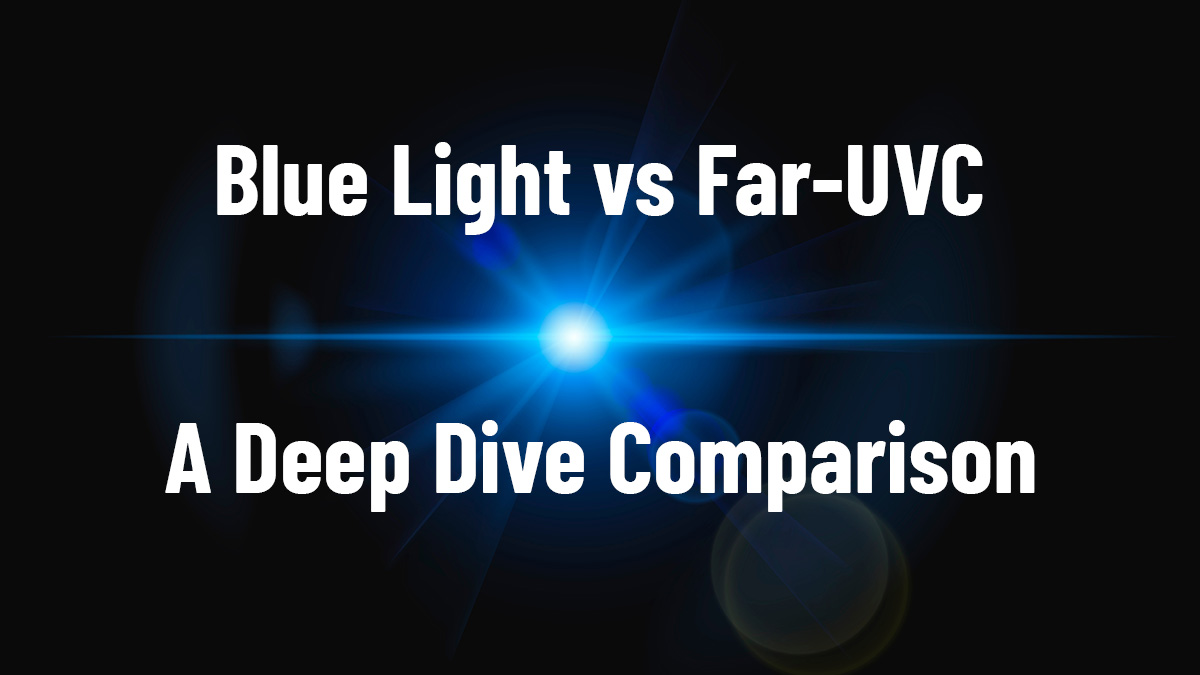
Far-UVC (typically at 222 nm) is an effective decontamination technology that can inactivate microorganisms without posing significant hazards to human health under regulated exposure conditions.
In this blog post, we will compare the efficacy, safety and efficiency of blue light and Far-UVC, as both stand out for their unique mechanisms and safety profiles —exploring their strengths, limitations, and real-world applications—to help you understand which might be better suited for your decontamination needs.
Mechanism of action
Blue light, primarily in the violet-blue range, exerts its antimicrobial effect through the photoexcitation of endogenous porphyrins within microbial cells, leading to the generation of reactive oxygen species (ROS) and subsequent oxidative damage. This mechanism has demonstrated efficacy against a range of bacterial species.
Far-UVC, on the other hand, inactivates pathogens by directly damaging nucleic acids, leading to the formation of pyrimidine dimers in DNA and RNA. Due to its limited penetration depth in biological tissues, far-UVC has been shown in experimental and early clinical studies to inactivate airborne and surface-bound pathogens without causing harm to human skin or eyes, offering a potentially safe solution for continuous disinfection in occupied environments.
Efficacy
Bacterial and viral inactivation is a property of both visible and UV light, albeit with a very big variation in disinfectant efficiency.
To assess the applicability of both technologies for continuous disinfection we start by listing the D90 dose for key microorganisms. The D90 dose is a measure of the light-dose needed to inactivate 90% of a given population of microorganisms, sometimes also referred to as a log1 reduction. The main reference of the values posted below is two review papers made by the same authors, ensuring fair basis of comparison. Both reviews collect data from more than 100 peer-reviewed journal articles.
405 nm D90 dose [mJ/cm2] |
222 nm D90 dose [mJ/cm2] |
Efficacy ratio |
|
| E.coli | 75 600[1] | 2,1[2] | 35 000:1 |
| List.mono. | 45 900[1] | 3,6[2] | 13 000:1 |
| Staph.aur. | 35 900[1] | 4,7[2] | 7 500:1 |
| SARS-CoV-2 | 6 500[3] | 0,48[2] | 13 500:1 |
| Influenza A | 13 000[3] | 1,28[2] | 10 000:1 |
Key point: Blue light requires thousands of times more dose to achieve the same inactivation as Far-UVC.
Safety
While both utilize specific wavelengths to neutralize bacteria and viruses, their safety profile, and practical applicability differ substantially.
Blue light: 405nm
405 nm lies on the edge of the visible spectrum. Safety is governed by various wavelength dependent exposure limits, the dominant effect being the retinal blue exposure limit.
Assuming a monochromatic source at 405 nm with a uniform light distribution:
- The long term (>10000 s) exposure limit is 157.1 mW/cm2.[4]
- Short term (<10000s) max dose: 157 1000 mJ/cm2. [4]
As such for blue light we have a limitation both on irradiance, irradiance hazard, and on cumulative energy, dose cap. Adding to this, relevant concerns remain:
- Individuals without a natural lens (aphakia), including infants or post-cataract surgery patients are subject to the aphakic eye hazard, lowering daily dose to 261 800 mJ/cm2 regardless of duration.
- UV exposure limits extend all the way to 400 nm, i.e. close to the peak wavelength of 405nm, and hence depending on the exact emission spectrum of the blue-light disinfection source the UVA exposure should be considered. At 400nm the daily dose is 100 000 mJ/cm2.
- Continuous or late-evening exposure may cause circadian misalignment, especially in sensitive populations (children, shift workers).
222nm
For Far UVC, the first indications of human safe use of 222nm light came around 2015 and since that a lot of independent research has proven the overall safety of far UVC, although niche areas remain an active field of research. The novelty means that laws and standards across the world in some cases have been updated and in other cases still refer to outdated knowledge.
- ICNIRP 2004 limit: 23 mJ/cm² daily (some regions)
- Updated ACGIH 2022 limits: 161 mJ/cm² (eye) and 479 mJ/cm² (skin) daily
Both expressed purely as a daily dose cap.
On a general note, the exposure levels in the two regimes have been on quite different trajectories.
- Concerning blue-light a report from EU’s “Scientific Committee on Health, Environmental and Emerging Risks” [7] concludes:
“The current EN 62471 standard does not take account of population groups particularly sensitive to blue light, hence there are no specific recommendations for population groups whose natural mechanisms for filtering blue light are diminished (children, aphakics and pseudophakics)”
For 222nm light the opposite has been the case with numerous renowned regulatory bodies updating their exposure limits to much higher allowed doses, based on the resent scientific findings on human safety. A recent review article[8] underscored the safety of the ACGIH guidelines and research project have been initiated to explore if the exposure limits can be increased even further.
Energy-efficiency
When evaluating disinfection technologies, both power efficiency and biological effectiveness are critical. Here's a breakdown comparing blue light and Far UVC:
Wall-plug efficiency (i.e., how much electrical power is converted into useful light):
- Blue light: ~30%
- Far-UVC : ~1%
This gives blue light a 30:1 advantage in terms of raw electrical-to-light conversion. But
2. Biological Efficiency
- Biological efficiency refers to how effectively the light inactivates pathogens per unit of energy.
- Far-UVC is 7,500 to 35,000 times more biologically effective than blue light.
Overall Energy Efficiency
- When combining both factors - electrical efficiency and biological effectiveness; Far UVC still comes out far ahead.
- Even though blue light is 30 times more efficient electrically, Far-UVC is so much more biologically potent that it ends up being approximately 250 to 1000 times more energy efficient overall as a disinfection solution.
System Integration in Occupied Spaces
405 nm:
- Rapid disinfection would require intensities unsafe for occupants, referring back to Irradiance hazard (Log3 reduction of e-Coli in 5 min requires 756 mW/cm2).
This not only exceeds the exposure level but is also 8 times the total solar irradiance. In other words, to have a real effect on microorganisms the environment being disinfected must be covered in blue light to the point where occupation during disinfection is both unpleasant and against regulations. - Safe levels → hours needed for meaningful pathogen reduction → impractical for real-time infection control. Even in such slow system, the cumulative energy would come close to he dose-cap given in regulations.
222 nm:
- Works effectively at low irradiance, i.e. can be integrated discreetly into ceiling or targeted fixtures for continuous, occupant-safe disinfection.
- Dose cap means you can run at much higher power (up to the point the total daily dose is reached), achieving disinfection in seconds or minutes. In addition to the rapid disinfection this enables clever control of the 222nm disinfection systems where usage is adapted to the occupancy pattern of the room.
As such Far UVC offers a highly practical and non-invasive solution for real-time disinfection in occupied environments.
Conclusion
In the context of modern infection control, the choice between blue light and Far-UVC should be driven by specific use-case requirements.
While blue light has the advantage of higher electrical efficiency and a degree of visual integration into lighting systems, its slower action and higher exposure needs limit its utility for real-time pathogen control in occupied spaces.
Far-UVC offers unmatched speed, safety in occupied environments, and energy efficiency in biological terms, positioning it as the leading candidate for next-generation disinfection solutions.
References:
-
[1]: Hessling, 2017
[1]: Hessling, 2017. (Photoinactivation of bacteria by endogenous photosensitizers and exposure to visible light of different wavelengths – a review on existing data) https://doi.org/10.1093/femsle/fnw270
-
[2]: Hessling, 2021.
[2]: Hessling, 2021. (The impact of far-UVC radiation (200-230 nm) on pathogens, cells, skin, and eyes - a collection and analysis of a hundred years of data) https://doi.org/10.3205/dgkh000378
-
[3]: Rathnasinghe, 2021.
[3]: Rathnasinghe, 2021 (The virucidal effects of 405 nm visible light on SARS-CoV-2 and influenza A virus) https://www.nature.com/articles/s41598-021-97797-0
-
[4]:ICNIRP guidelines
[4]:ICNIRP guidelines on limits of exposure to incoherent visible and infrared radiation published in: Health Physics 105(1):74‐96; 2013
-
[5]: ICNIRP Guidelines
[5]: ICNIRP Guidelines on limits of exposure to ultraviolet radiation of wavelengths between 180 nm and 400 nm (incoherent optical radiation) published in: Health Physics 87(2):171-186; 2004
-
[6]: ACGIH Threshold Limit Values (TLVs) and Biological Exposure Indices (BEIs); 2022
[6]: ACGIH Threshold Limit Values (TLVs) and Biological Exposure Indices (BEIs); 2022
-
[7]: Scientific Committee on Health, Environmental and Emerging Risks (SCHEER)
[7]: Scientific Committee on Health, Environmental and Emerging Risks (SCHEER) - Opinion on Potential risks to human health of Light Emitting Diodes (LEDs), 2018
-
[8]: Görlitz M, Justen L, Rochette PJ, et al.
[8]: Görlitz M, Justen L, Rochette PJ, et al. Assessing the safety of new germicidal far-UVC technologies. Photochem Photobiol. 2024; 100: 501-520. doi:10.1111/php.13866
Are you interested in more articles like this? Join our Monthly Newsletter.
FAQ: Far-UVC vs Blue Light Disinfection
-
Why is Far-UVC more effective than blue light?
Far-UVC inactivates pathogens directly at the DNA/RNA level, requiring thousands of times less energy than blue light. For example, Far-UVC neutralizes SARS-CoV-2 with just 0.48 mJ/cm², while blue light needs 6,500 mJ/cm². This makes Far-UVC the clear leader in real-world disinfection speed and effectiveness.
-
Is Far-UVC safer for use around people than blue light?
Yes. Far-UVC penetrates only microns into skin and eyes, making it safe under modern exposure guidelines. Blue light, by contrast, can damage the retina at high doses, poses extra risks to children and cataract patients, and may disrupt circadian rhythms—limiting its suitability for continuous disinfection in occupied spaces.
-
Which technology is more energy efficient overall?
Even though blue light converts electricity into light more efficiently (~30% vs ~1%), Far-UVC is hundreds of times more biologically efficient at killing pathogens. The combined result: Far-UVC is still 250–1000 times more energy efficient for disinfection.
-
Can blue light be used for real-time disinfection in occupied environments?
No. To achieve meaningful microbial reduction in minutes, blue light would require irradiance far above human safety limits—making it impractical when people are present.
-
Why is Far-UVC considered the practical choice for modern infection control?
Because it works quickly at safe exposure levels, Far-UVC can be integrated seamlessly into ceilings and fixtures for continuous, real-time disinfection in hospitals, cleanrooms, offices, and public spaces. Blue light cannot deliver this in occupied environments, leaving Far-UVC as the practical and future-proof choice.

 UV222™
UV222™ UV222 Linear
UV222 Linear UV222 Downlight
UV222 Downlight Vertex 222
Vertex 222.png) UV222 Pendant
UV222 Pendant.png) UV222 Booth
UV222 Booth.png) UV222 Step-On
UV222 Step-On.png) UV222 Cleanroom Downlight
UV222 Cleanroom Downlight DUO 222 Downlight
DUO 222 Downlight UV222 Material Airlock
UV222 Material Airlock UV222 Ambulance
UV222 Ambulance UV222 Industrial
UV222 Industrial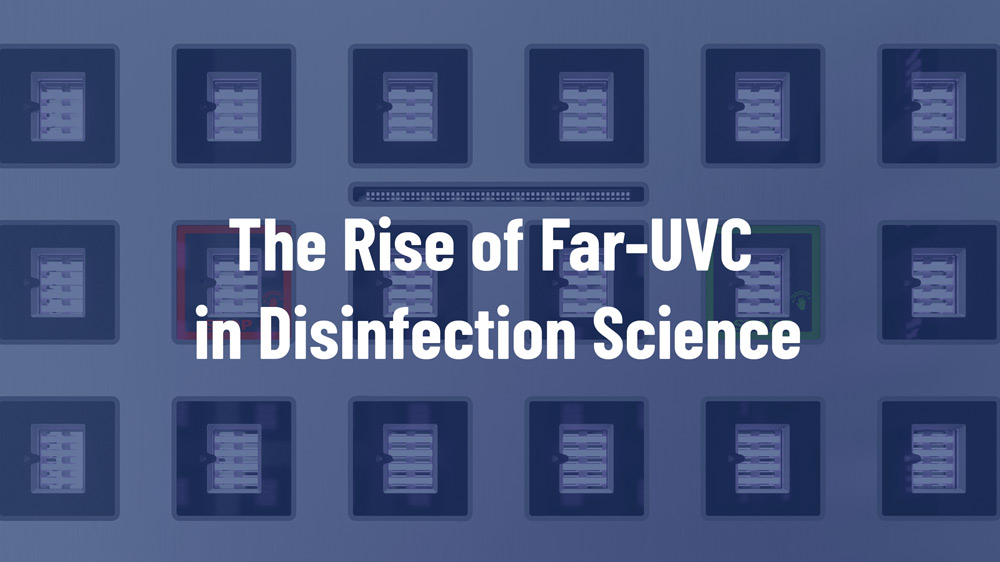
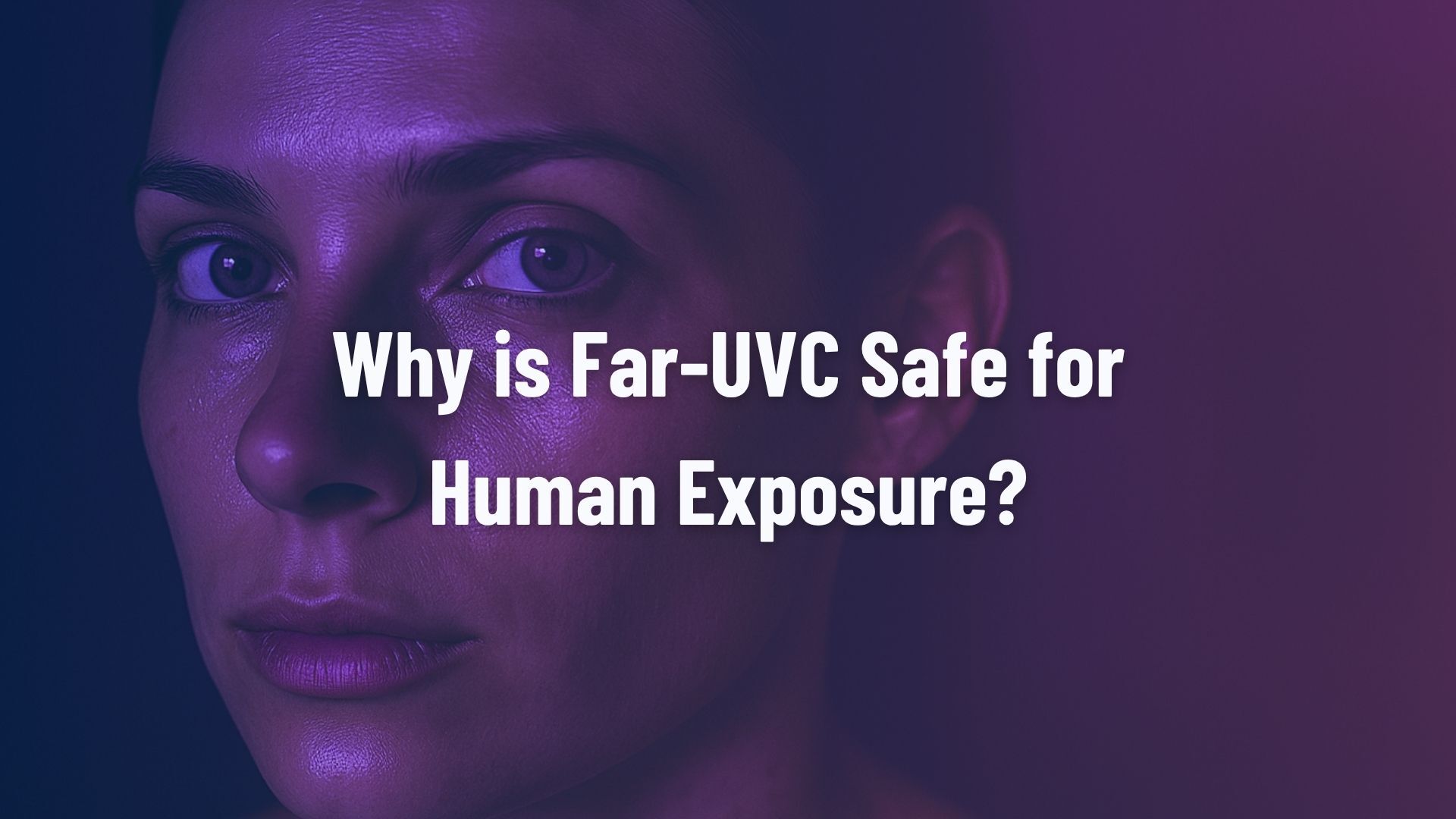

.jpg)
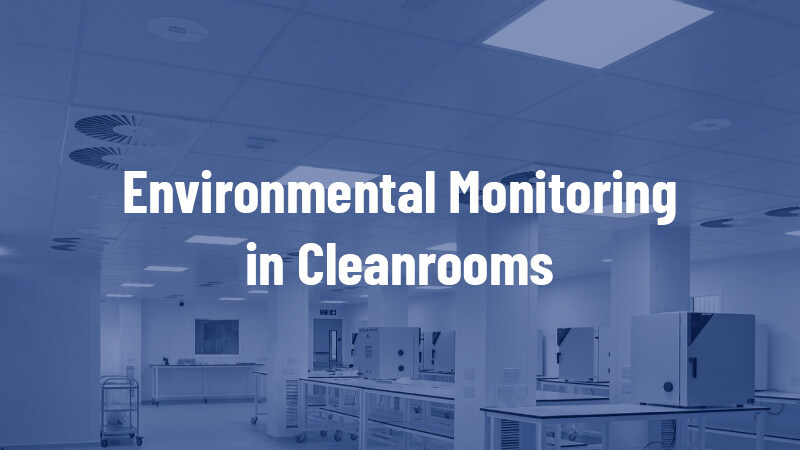
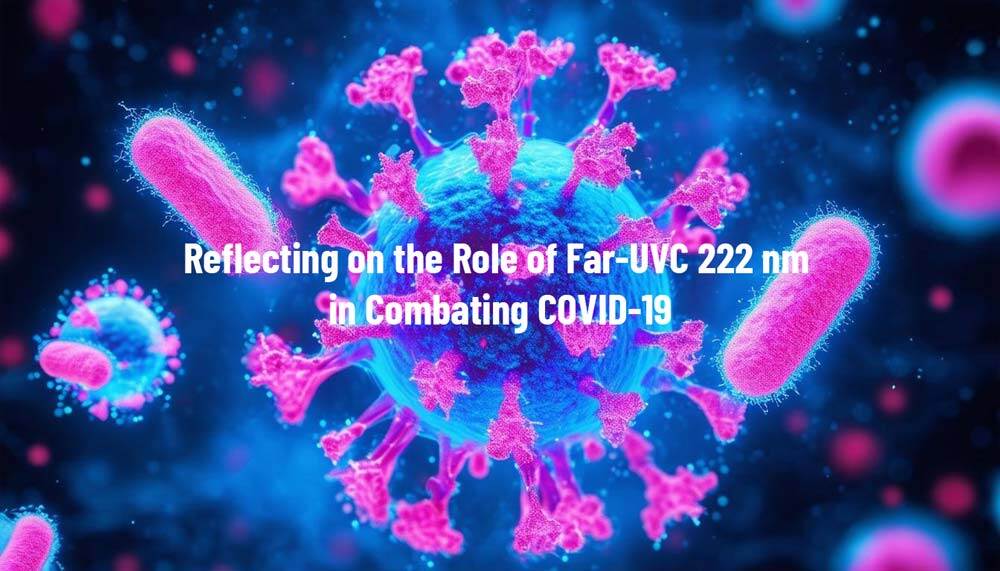
.jpg)
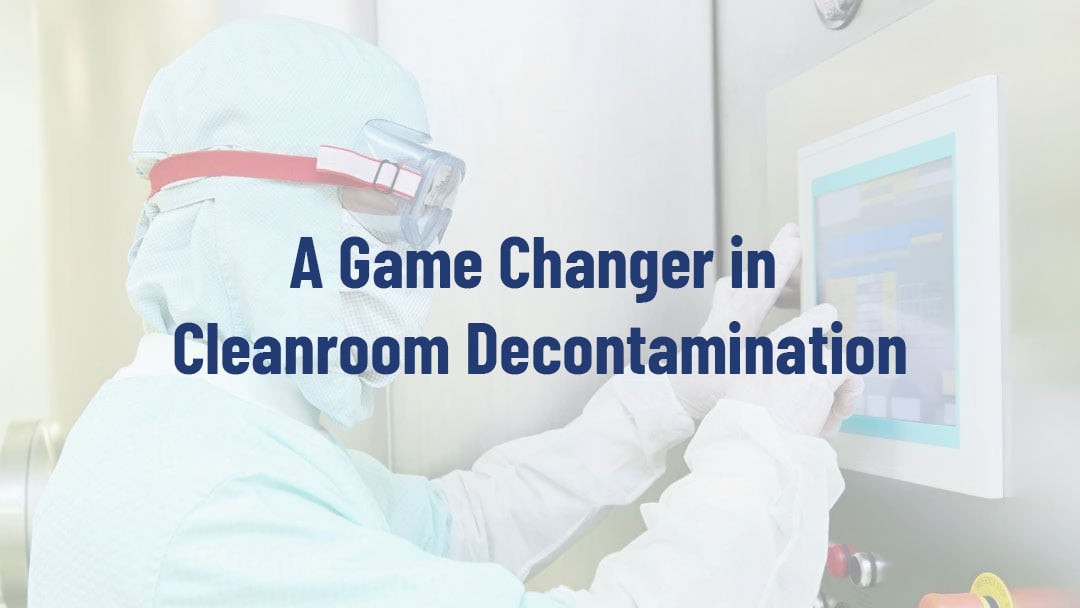

%20(3)%20(2).png)